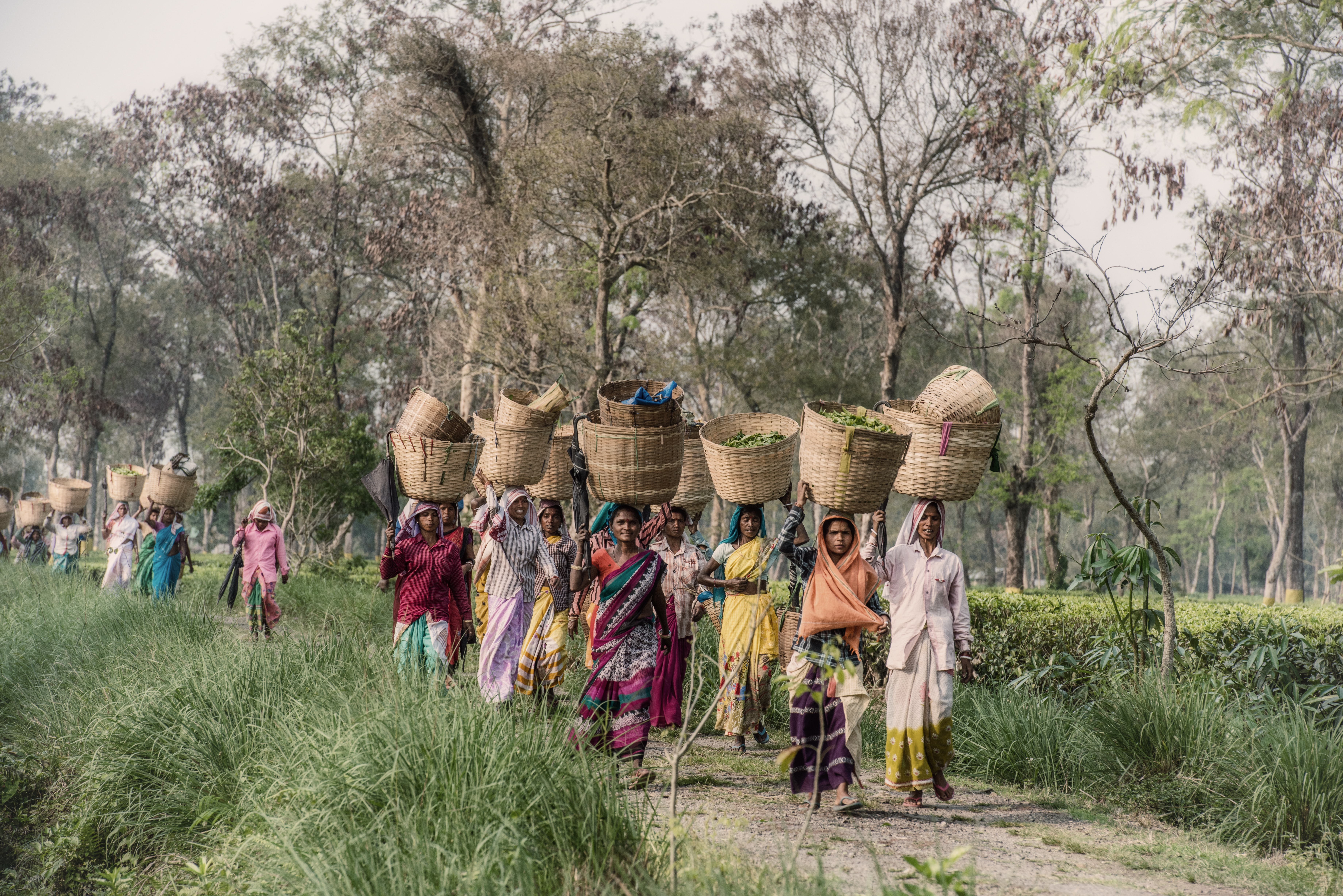Away from the chaos of urban life, where the traditions, culture, and lifestyle are maintained in its authentic form, it’s the Rural India where one can get the opportunity to experience real India. Here are some of the glimpses of rural life, when you visit the villages of India.
Still, around 65% of the population lives in the villages of India. The fascinating place free from the hustle & bustle of city life; peaceful surroundings, greenery all around, pond with beautiful flowers, village temple, farming land, mango orchards, etc are some to describe the beauty of the village which is enhanced by the simple & happily living lifestyle of the villagers. Being India is a land of diversity, villages are also more or less in accordance with the region, however, the feel is the same throughout.
* Milkman on the way to the market
Villagers live in hut style houses made of mud or clay with a straw-thatched roof. The walls and floor are painted by a mixture of dirt, grass, and cow dung. The outer walls are decorated with eye-catching paintings, which are painted with powdered rice water or colored powder. Traditional houses are having a courtyard used for having food, drying of firewood, crop, etc. In summer it keeps rooms cool and in winter people sit in sun. Houses are with an open space with tall trees in front, a vegetable garden at the backward, a small pond, or water bodies where people do daily activities including fishing in many occasions. Indian villages are eco-friendly in nature, however, due to the nature of the construction every year before and after monsoon they need maintenance. Most of the households have domestic animals like cows, goats, hens, etc.
* Happy human faces (left: a village in Gujarat. right: a village in Ladakh)
Most of the villagers are farmers, other works as carpenters, blacksmith, potters. A plow made of wood & iron is used by farmers. Traditionally ploughs were drawn by oxen, but in few modern farms, tractors are being used. Family farming is a way of life, where both women and men work together with different roles and responsibilities. Women job is primarily planting, weeding, post-harvesting processing, whereas men work pulling bullock cart, loosening soil, mixing of fertilizer, selling crops, vegetables in the market, etc. Although farming is the primary occupation in most of the villages, fishing, dairy farming also provides a major source of income.
*Traditional village house and farmland in Odisha.
Although farming is the primary occupation in most of the villages, fishing, dairy farming also provides a major source of income.
*Farmlands in Western Ghat
Mostly villagers use the local mode of transport for commuting, roads are narrow & congested at times, often get damaged during monsoon. However, using local transport is not less than experience and not to be missed even if it’s a ride on a tonga, on camel cart, on a bullock cart, shared auto-rickshaw.
*The local mode of transport in various parts of India
Still, people adopt the traditional way of fetching water for daily household consumption. They use a hand pump or use bucket & rope to lift water from well or sometimes collect water from a river or water bodies. There are places like Rajasthan, Jharkhand, Bihar women have to walk miles to collect water, because of the scarcity of the same. In agricultural land well water, reservoir, canal irrigation systems are practiced depending on the topography.
*A lady collecting water for household use Open kitchen for a nomadic tribe in Gujarat in a village of Rajasthan
The food habit is quite diverse and is largely dependent on the type of agricultural product yield in the region. Every region has its style of cooking, the use of spices, the flavors, and their specialties changes with the landscapes. Some of the not to be missed authentic delicacies are Rogan josh of Kashmir, Litti Chokha of Bihar, Idli-sambar of Tamilnadu, Fish curry of Kerala, Makki ki Roti – Sarson ki saag of Panjab, Dalma of Odisha, to name a few. Veg and non-veg except beef are easily available; however, eating habits of people vary according to community and region.
Must Read: “Nalumanikattu” an Epitome of Sustainable Tourism in Thiruvanchoor – Kottayam, Kerala
*Traditional houses in different regions of India
Ethnic clothing distinguishes one part of India from the other & it’s amazing to see the unique style of traditional dresses. The style of clothing for men & women is quite different from north to south and east to west. Many of the villages are well-known to retain their indigenous craftsmanship.
*Bronze casting of Thanjavur Patachitra of Raghurajpur, Odisha
The villagers are friendly and socially knit together. Normally male members of the family assemble in the evening, chit chat till late hours. It’s a real excitement to join villagers during festivals, which is celebrated with great enthusiasm.
Even though most of the people are not well educated, however, they have retained their unique customs and traditions which signify the roots of their community. Their loving nature and gesture especially welcoming guests are mesmerizing and truly reflect the basis of Hindu culture “Atithi Devo Bhava”. A trip to a Rural India is a perfect holiday destination for people who love the charming lifestyle of villages and to learn about the culture.
Author note: Anima Biswal is a Travel & Tourism professional from Delhi. Her email id: biswalanima25@gmail.com, Mobile no: 9811735792.
